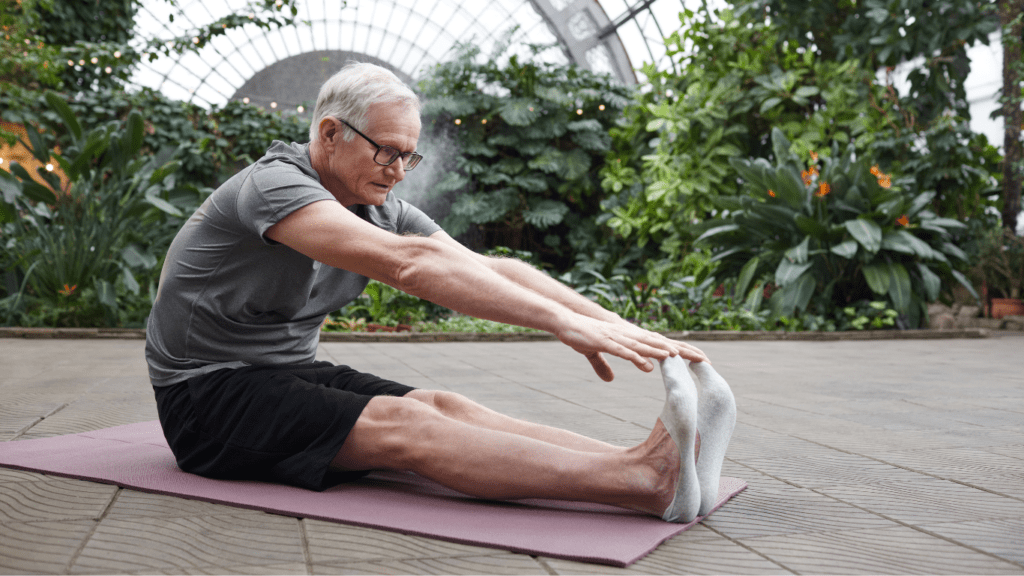Exploring The Power Of Stretching
Stretching plays a pivotal role in any fitness regimen. It increases blood flow to the muscles, which enhances flexibility and prepares the body for exercise. When flexibility improves, range of motion expands, allowing for more effective workouts. I find that incorporating diverse stretching techniques—static, dynamic, and ballistic—addresses different muscle groups, enhancing overall fitness.
Reducing injury risk is another crucial benefit. Muscles and tendons become more pliable, which decreases the likelihood of strains or sprains during physical activity. I view stretching as an essential preventive measure that maintains muscle health and fosters longevity in fitness pursuits.
Recovery also accelerates with regular stretching. By promoting circulation, stretching helps in clearing accumulated waste products, such as lactic acid, from fatigued muscles. My recovery routine always includes stretching to ensure muscle relaxation and a quicker return to peak performance levels.
Incorporating stretching into daily routines boosts posture and functional fitness. Flexibility improvements lead to better alignment and balance, aiding in the performance of everyday tasks with ease. As I engage in activities that require physical exertion, the enhancements in flexibility and posture make movements more fluid and less laborious.
Benefits Of Flexibility In Fitness
Flexibility holds significant power in enhancing fitness levels. Incorporating stretching exercises leads to numerous benefits that improve overall health and physical capability.
Improved Range Of Motion
Broadening range of motion through flexibility ensures joints move efficiently. Exercises like:
- Yoga
- Pilates
increase muscle elasticity, enhancing mobility. This adaptability aids in executing more challenging exercises effectively.
Reduced Risk Of Injury
Flexibility directly reduces injury risks by conditioning muscles and tendons. Pre-exercise stretching warms muscles, reducing strain. Regular flexibility exercises prevent overuse injuries and help maintain joint health.
Enhanced Physical Performance
Maximized physical performance stems from increased flexibility. Athletes often use dynamic stretches pre-workout to boost muscle power. Flexibility enables the execution of precise movements, optimizing performance across various sports and activities.
Different Types Of Stretching Techniques

Stretching techniques vary in form and function but all contribute to enhancing flexibility and preventing injuries. Below, I explore a few key techniques.
Static Stretching
Static stretching involves holding a stretch for a specified period, typically 15 to 60 seconds. It targets specific muscle groups by extending them to their farthest point. I find it effective post-workout when muscles are warm and pliable, helping to alleviate tension and improve flexibility over time. This technique’s slow nature minimizes the risk of an injury.
Dynamic Stretching
Dynamic stretching incorporates movement to stretch muscles through a range of motion, ideal for pre-workout routines. It prepares my body by increasing blood flow and warming up muscles. Swinging arms, leg swings, and torso twists are examples of dynamic stretches. These movements are sport-specific and enhance performance by simulating actions in the activity or sport.
PNF Stretching
Proprioceptive Neuromuscular Facilitation (PNF) stretching is more advanced and often requires a partner. It combines stretching and contracting muscles to increase flexibility quickly. I use techniques like the contract-relax method, which involves holding a stretch, contracting the muscle, then stretching further. This technique’s success lies in its ability to enhance muscle elasticity and range of motion.
How To Incorporate Stretching Into Your Routine
Incorporating stretching into my fitness routine enhances flexibility and overall performance. I maximize benefits by strategically timing and selecting appropriate stretching techniques.
Pre-Workout Stretching Tips
Pre-workout stretches prepare my body for physical activity by increasing blood flow and muscle temperature. I focus on dynamic stretching, which incorporates movement to engage muscles fully. For example, I could perform leg swings, arm circles, or walking lunges to target major muscle groups. I aim to spend around 5-10 minutes on dynamic stretches, aligning them with the exercises in my workout.
Post-Workout Stretching Strategies
After my workout, stretching aids in recovery by promoting circulation and reducing muscle tension. I prefer static stretching at this stage, where I hold each stretch for 15 to 30 seconds. Stretching the muscles used during my workout ensures I’m addressing areas that worked the hardest. Common stretches include the seated hamstring stretch or the triceps stretch. Consistent post-workout stretching helps maintain flexibility and enhances muscle recovery.
Common Myths About Stretching
Several myths exist around stretching that may mislead fitness enthusiasts. By addressing these misconceptions, I aim to provide clarity and encourage informed stretching practices.
- Stretching Prevents Injuries Automatically: While stretching plays a crucial role in reducing injury risk, relying solely on it without considering other factors like technique and equipment might not be sufficient. Stretching is most effective when integrated with a comprehensive warm-up and proper training methods.
- Static Stretching is Always Best: Although static stretching benefits flexibility, it isn’t always appropriate, especially pre-exercise. Dynamic stretching better prepares the muscles for activity through movement, whereas static stretching is ideal post-workout for recovery and flexibility enhancement.
- Stretching is Only for Athletes: Everyone, not just athletes, benefits from stretching. Everyday activities demand flexibility too, making stretching an essential practice for all individuals to maintain mobility and prevent muscle tightness.
- You Can’t Overstretch: While beneficial, overstretching can cause harm, like strains or injuries. Listening to the body and avoiding pushing beyond comfort limits ensures effective and safe stretching routines.
Understanding these common myths helps in optimizing the role of stretching in a fitness program, avoiding misconceptions, and maximizing the benefits of flexibility training.

 Milla Collings plays a pivotal role at Make Athlete Action, where her expertise in sports nutrition and conditioning has been invaluable in crafting content that resonates with athletes and fitness enthusiasts alike. With a deep understanding of how nutrition impacts performance, Milla has contributed extensively to the platform’s nutrition and conditioning segments, ensuring that athletes receive practical, science-backed advice. Her commitment to excellence has helped elevate Make Athlete Action as a trusted source of knowledge for anyone looking to optimize their diet and achieve their peak performance.
Milla Collings plays a pivotal role at Make Athlete Action, where her expertise in sports nutrition and conditioning has been invaluable in crafting content that resonates with athletes and fitness enthusiasts alike. With a deep understanding of how nutrition impacts performance, Milla has contributed extensively to the platform’s nutrition and conditioning segments, ensuring that athletes receive practical, science-backed advice. Her commitment to excellence has helped elevate Make Athlete Action as a trusted source of knowledge for anyone looking to optimize their diet and achieve their peak performance.